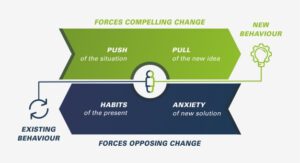In this five-part series, Five insights for innovating in emerging markets, I explore several insights, one by one, that my research has uncovered for innovators interested in emerging markets. This is part three of the series, based on an earlier blog.
Today Henry Ford is widely recognized for revolutionizing the automotive industry and democratizing the automobile with his Ford Model T. But 80 years ago he struggled to get people to believe in his vision of building a car for the common man in America. When Ford tried convincing some of his investors that he wanted to create a new market for affordable automobiles, at a time when the nation barely had roads that could support them, several of his investors pulled out. Cars at the time were niche products for the rich and these investors just couldn’t see it.
Ford, however, saw future customers with unmet needs. For instance, he saw farmers who struggled to move their harvests to markets efficiently, and families not enjoying America’s great outdoors. Ford knew intuitively that prospective customers would embrace a solution that allowed them to move around more freely. And he was right. Today, Ford Motor Company has annual revenues of more than $156 billion, employs more than 200,000 people, and manages roughly $258 billion worth of assets.
Likewise, in 1988, when two brothers Haresh and Sarjen Aswani decided to introduce Indomie instant noodles to the Nigerian market, many thought they had lost their minds. Nigeria was in no way an investment destination. The poor West African country was under military rule and had little to no potential for growth, that is, according to conventional economic metrics.
But the brothers observed firsthand that Nigeria was a rapidly urbanizing country where many were poor and pressed for time. An inexpensive and tasty meal that could be cooked in less than three minutes would be a hit, they thought. And their intuition was right. Today, Tolaram, the company the brothers set up in Nigeria, grosses roughly one billion dollars and is introducing other products into Nigeria’s economy. Tolaram has been so successful that Kellogg purchased half of their distribution arm in Nigeria for half a billion dollars in 2015.
Ford and the Aswani brothers didn’t have a crystal ball to help them see immense opportunity that others were blind to. Instead, they were simply in tune with the progress their future customers wanted to make. We call this progress a “job” to be done, as described in the Theory of Jobs to Be Done.
Uncovering innovation opportunities with the Theory of Jobs to Be Done
The theory of Jobs to Be Done is a framework for better understanding customer behavior. Our research reveals that people don’t simply buy products or services; they pull them into their lives to make progress. Uncover customers’ jobs, and you’ll discover a world of innovation possibilities.
But to do so, innovators must walk in the shoes of their prospective customers in order to understand their unique circumstances and daily struggles. This will enable them create a product that customers actually have the capacity and willingness to “hire”—in contrast with other products that are feature-rich, but based on assumptions of what a company believes the “average” customer might want. As it turns out, a one-size-fits-all solution often fits none.
It’s also important to recognize that a customer’s decision-making process about what to hire for a given job is complicated. There are always two opposing forces battling for dominance within us in that moment of choice, and they both play a significant role in our decision to hire something, whether it’s a car or a pack of noodles.
The forces of progress
The diagram below demonstrates the opposing forces at play when a customer considers whether to change his behavior and hire a prospective solution.
The forces compelling change to a new behavior include the push of the situation—the frustration or problem that a customer is trying to solve—and the pull of an enticing new product or service to solve that problem. For a customer to hire a new solution, the push has to be substantial; a problem that is simply nagging or annoying might not be enough to trigger someone to do something differently. Likewise, the pull has to be strong. The new solution to a customer’s Job to Be Done has to help that customer make progress.
There are also two unseen, yet incredibly powerful, forces at play at the same time that many innovators often ignore: the forces opposing change. First, habits of the present weigh heavily on consumers. I’m used to doing it this way, or living with the problem. I don’t love it, but I’m at least comfortable with how I deal with it now. On top of that, anxieties about the cost of learning something new and generally about the unknown can be overwhelming.
What we often find is that innovators focus exclusively on the forces compelling change—making sure that the new solution for resolving a customer’s struggle is sufficiently alluring to cause them to switch—but ignore the powerful forces blocking that change.
For innovators to be successful, especially innovators in emerging markets, they must focus their solutions on the Jobs to Be Done of potential customers, taking into consideration all the forces compelling and preventing change. That is certainly what Henry Ford and the Aswani brothers did, thereby making their products such a part of daily life that it is now difficult to think about the United States and Nigeria without the influence of these products. When innovators develop solutions that address potential customers’ jobs, they’ll not only create a product that does well in the market, but also inadvertently engage in robust economic development.
For more, see:
Insights for innovating in emerging markets: There are 2 types of economies
Insights for innovating in emerging markets: Pull, don’t push
Insights for innovating in emerging markets: Integrate, or outsource?
Insights for innovating in emerging markets: Create the market you want to be a part of




